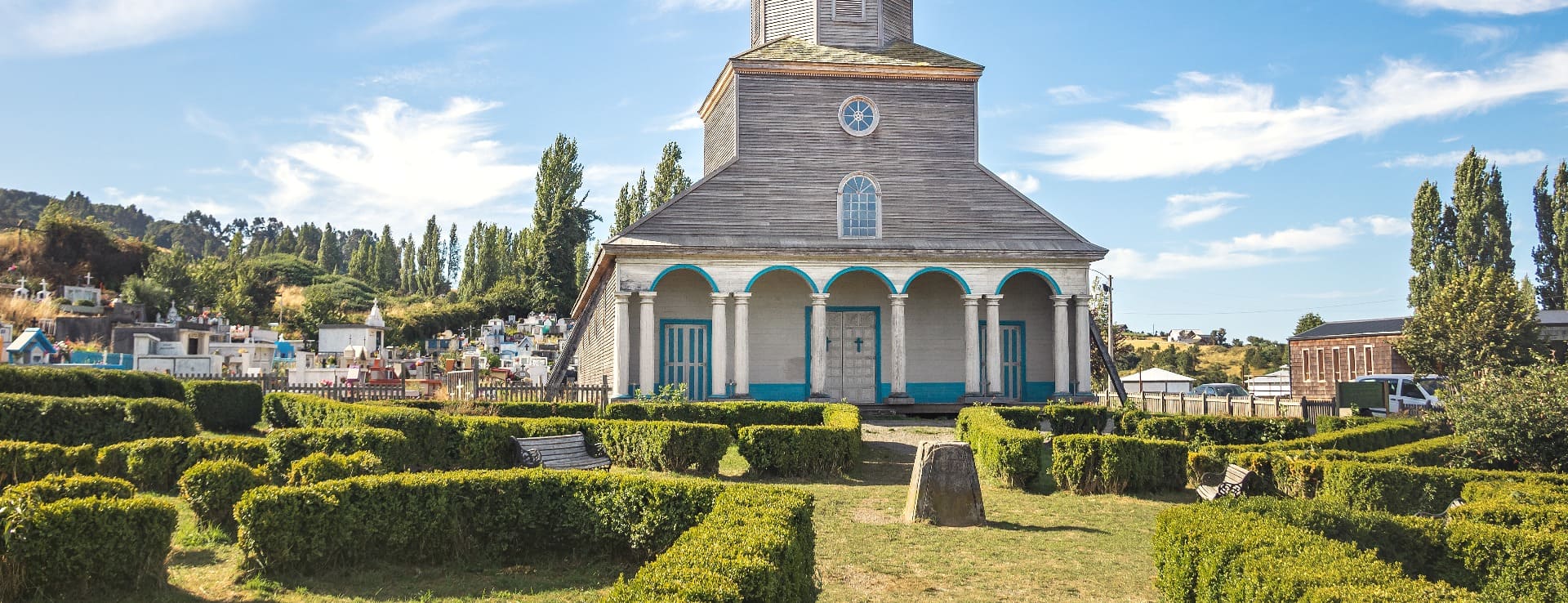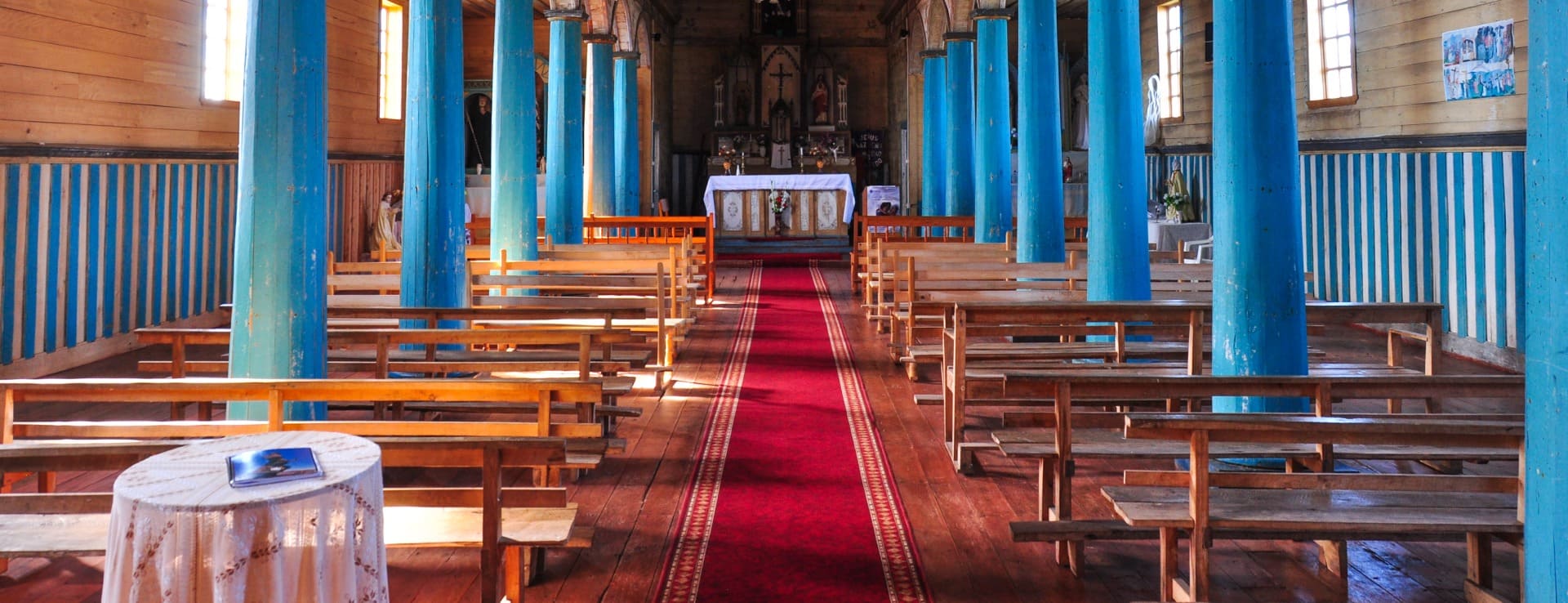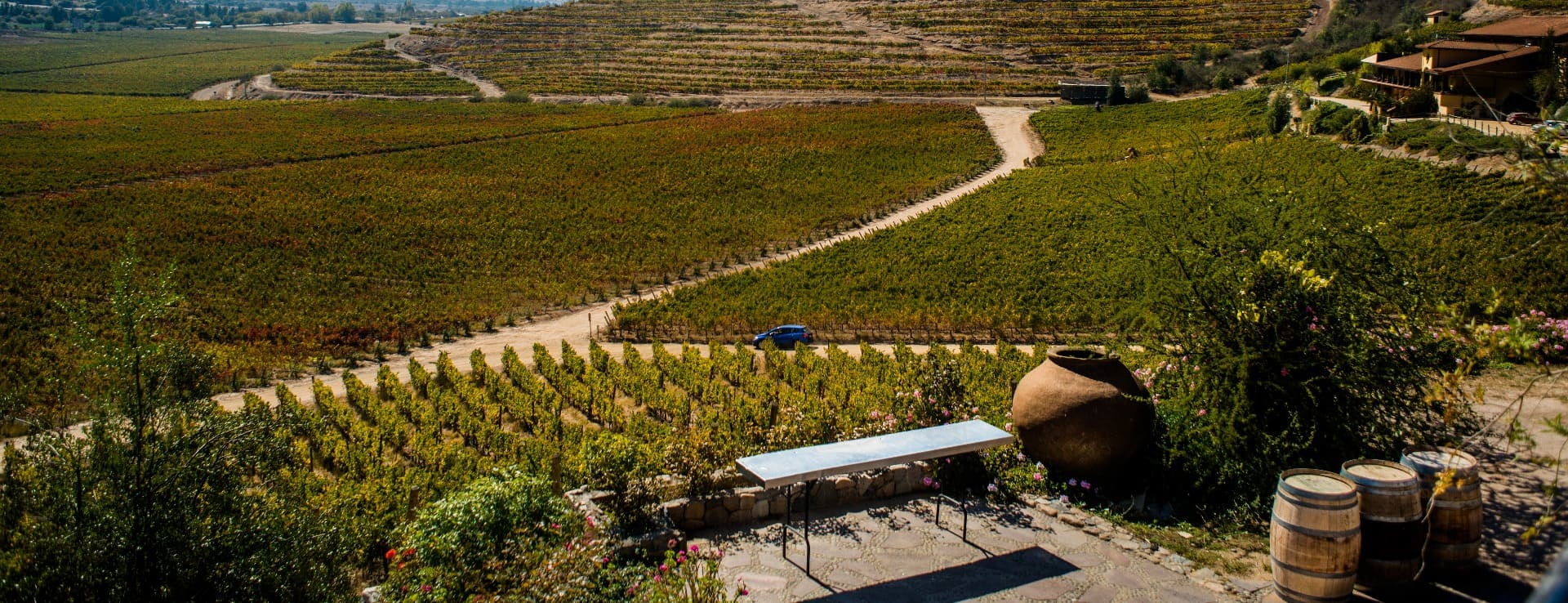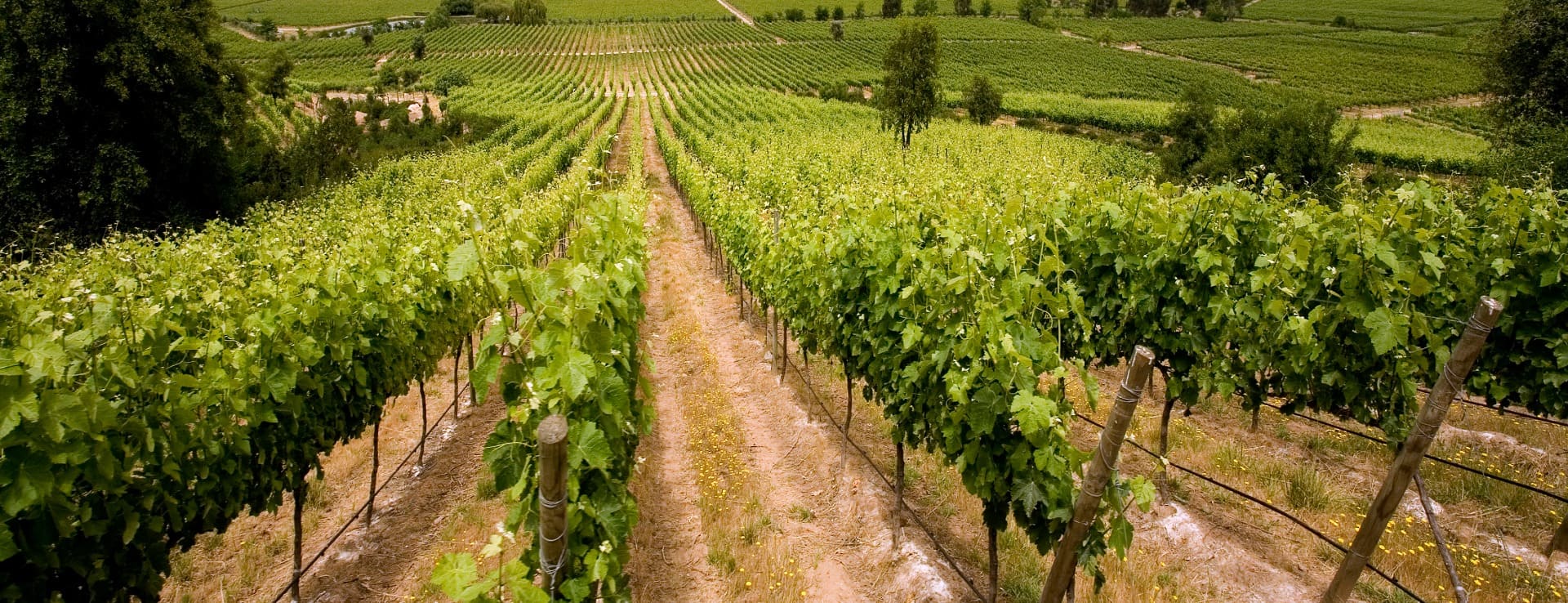Find your winery or vineyard
Infographic of the Denomination of Origin
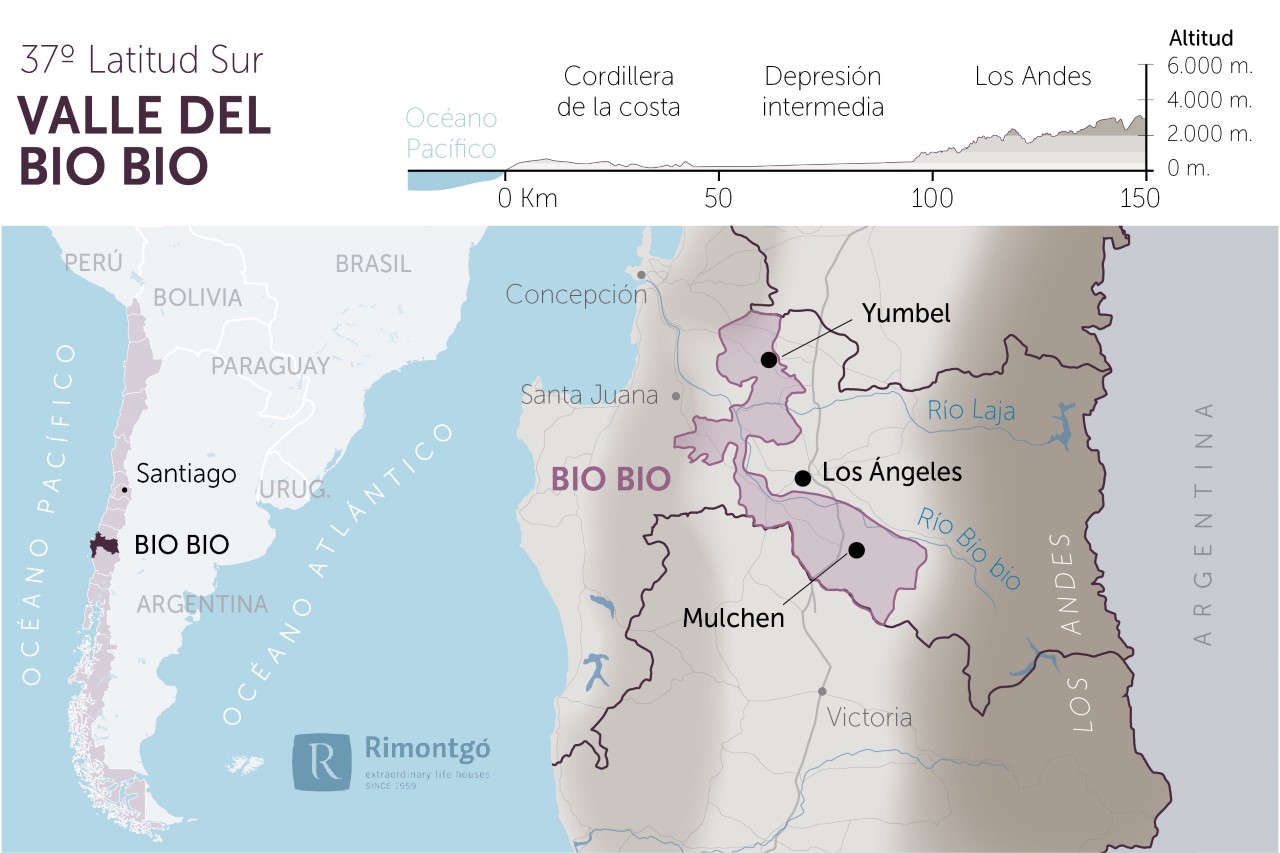
Change to imperial units (ft2, ac, °F)Change to international units (m2, h, °C)
Total surface area:
2.200 ha5.436 ac
Altitude of the vineyards:
Min: 100m
Max: 400m
Min: 328ft
Max: 1.312ft
Temperature:
Min: 6º
Max: 23º
Min: 43°F
Max: 73°F
Yearly rainfall:
1.276 l/m2119 l/ft2
Bío Bío
The traditional production of table wine in the Biobío region has been complemented in recent rears by a firm commitment to obtaining quality wines thanks to varieties such as Pinot Noir. The Biobío valley is a subregion of the wine region of southern Chile with two wine areas that correspond to two municipalities. On the one hand, the wine area of Yumbel is comprised by Yumbel and Laja and, on the other hand, the wine area of Mulchén, is formed by Nacimiento and Negrete.
HISTORY OF WINE
Traditionally, Valle de Biobío, the designation included in the province of the same name, was considered the border with the Southern Zone, an area that wasn’t considerate fully appropriate for the wine culture activity, subsequent facts have proved the contrary. Even in recent times a new Chilean wine region has been expanded, Zona Austral (Southernmost Zone) further south, with the valleys of Cautín and Osorno.
Biobío has become one of the most specialised Chilean areas in the production of table wine, together with the neighbouring designation of origin Valle del Itata thanks to the cultivation of traditional vines such as País or Muscat. The table wine is still the purpose of great part of Biobío’s wine production, although for several years, different wineries are opting for a higher quality wine.
WINE AND WINERIES
Among the wineries that in recent years have opted for high-quality wines are VinSur, Don Francisco or Carpe Diem. These wine businesses together with other wineries included in the designation of origin Valle del Biobío are also opting for the implementation of wine routes with the aim of activate a touristic circuit in the province for wine lovers. Therefore, among the activities that visitors can make are cycling tours or horse riding crossing the vineyards of wineries such as Veranda or Agustinos, in which some of the produced wines can be tasted. Viña Cañata used to boast the southernmost winery in the world.
POINTS OF INTEREST
The Biobío province gathers different interesting places for visitors and tourist who visit the province. This province is famous for its magnificent ski slopes in the winter season, the pleasant beaches, the coves during the summer months and its great charms such as the Salto del Laja or the Wellness centre of Quillón with thousands of visitors year after year.
Other attractions within the province are natural or landscaped. One of the most visited is El Manco Lagoon, a natural space that stands out thank to its clear waters and the vegetation and fauna that surround it. It isn’t easily accessible; therefore, it is a route only appropriate for experienced or enthusiasts with experience in hiking or trekking. The best season to visit this lagoon is from November to the beginning of the first snows of the province. Another of the lagoons that receives more visits in the province is the known as El Barco, close to the Andes.
In the Biobío province we find plenty of activities that attract adventure sports enthusiasts. One of the newest in this Chilean area is rafting, sailing following the course of a river.
Nonguén National Reserve, inaugurated in 2009 and with more than 3,000 hectares with abundant flora and fauna species, including various endangered animal and plant species, such as deciduous forests. Among the endangered animal species that are found in Nonguén are the pudú, a deer typical of the Andes and the one known as "monito de monte".
D.O./Valle (wine regions)
Discover more wineries and vineyards for sale in these wine regions in Chile
Subscribe to our mailing list to receive news about wineries and vineyards.


